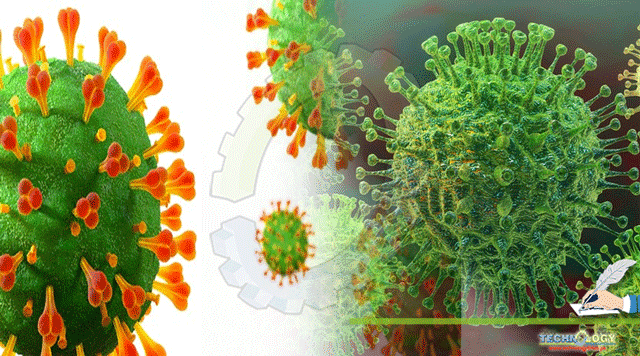Coronavirus disease 2019 (COVID-19) is defined as illness caused by a novel coronavirus. It is now called as severe acute respiratory syndrome.

By Syed Asad Raza Shah Naqvi, Athar Mahmood, Maria Naqve, Saba
Introduction
Coronavirus which was first identified an outbreak of respiratory illness cases in Wuhan City, Hubei Province, China. On December 31, 2019 WHO reported it initially. On January 30, 2020, the WHO declared the COVID-19 outbreak a global health emergency. So, WHO declared COVID-19 a global pandemic On March 11, 2020. It’s first such designation since declaring H1N1 influenza a pandemic in 2009.
Coronaviruses are medium-sized RNA viruses. These have very characteristic appearance in electron micrographs of negatively stained preparations. The nucleic acid is about 30 kb long. It is positive in sense. They are single stranded and polyadenylated. Mutations are common in nature. Moreover, Coronaviruses are capable of genetic recombination as a result of infections of 2 viruses at the same cell at the same time.
History
Coronaviruses were first discovered in the 1930s. At that time an acute respiratory infection of domesticated chickens was occurred. It was caused by infectious bronchitis virus (IBV). Arthur Schalk and M.C. Hawn described in 1931 a new respiratory infection of chickens in North Dakota. By gasping and listlessness infection of new-born chicks was characterized. The chicks’ mortality rate was 40–90%. But in 1965 when Tyrrell and Bynoe found that they could passage a virus named B814. In human embryonic tracheal organ B814 was found. Colds were produced in significant proportion of subjects. It was done by inoculating the medium from these cultures intranasally in human volunteers. In this way the presence of an infectious agent was demonstrated.
At about the same time, Hamre and Procknow were able to grow a virus. I was with unusual properties in tissue culture. Samples WERE obtained from medical students with colds. Both B814 and Hamre’s virus were called 229E. These were ether-sensitive and therefore presumably required a lipid-containing coat for infectivity. But these 2 viruses were not related to any known myxo- or paramyxoviruses. While working in laboratory of Robert Chanock at the National Institutes of Health, Mcintosh reported the recovery of multiple strains of ether-sensitive agents from the human respiratory tract by using a technique similar to that of Tyrrell and Bynoe.
Role of Plant
This virus has infected all over world and no vaccine has discovered yet. So plants are main diet of human beings. By intake of following kinds of plants or fruits can boost immune system to fight against covid-19.
Citrus fruits
Most people turn to vitamin C after they’ve caught a cold. That’s because it helps build up your immune system. The production of white blood cells is increased by Vitamin C.White blood cells is key to fighting infections. Popular citrus fruits include Grapefruit, oranges, tangerines, lemon etc. Red bell peppers contain twice as much vitamin C as citrus.
Garlic
It adds a little zinc to food. Early civilizations recognized its value in fighting infections. According to the National Center for Complementary and Integrative garlic may also help to lower blood pressure as well as slow down hardening of the arteries. Simmilarly Garlic’s immune-boosting properties seem to come from a heavy concentration of sulfur-containing compounds, such as allicin.
Ginger
It’s another ingredient many turn to after getting sick. It may help to decrease chronic pain and may possess cholesterol-lowering properties, according to recent animal research.
Spinach
Spinach made our list not just because it’s rich in vitamin C. Antioxidants and beta carotene also packed with it. They may increase infection-fighting ability of our immune systems. Flavonoids are packed with Both green and black teas. It is a type of antioxidant. Where green tea really excels is in its levels of epigallocatechin gallate or EGCG. It is another powerful antioxidant. Immune function is also enhanced by it.
Purple Coneflower
It produces cone-shaped flowers. Native Americans used it to treat a wide array of conditions, including viral infections. Purple Coneflower thought to have immune-boosting effects that make it particularly useful for treating viral infections.
Ginseng
Ginseng, which can be found in Korean and American varieties, is the root of plants in the Panax family. It has been shown to be particularly effective at fighting viruses. Peppermint is known to have powerful antiviral qualities. It is commonly added to teas, extracts, and tinctures to naturally treat viral infections. Its leaves and essential oils contain active components, including menthol and rosmarinic acid, which have antiviral and anti-inflammatory activity.
Tomato
Tomatoes are great food to eat when you are sick due to their high concentration of vitamin C. Just one medium tomato contains more than 16 milligrams of vitamin C, which is a proven fuel to your body’s immune system.
Turmeric
It contains a natural ligand of peroxisome proliferator‐activated receptor‐γ. This ligand represses inflammatory process by reducing cytokine production. It’s known as Curcumin. A similar role might be played in protecting against lung injury associated with COVID.
Future Aspect
Ongoing research supports plants as bio-factories for the production of eagerly-awaited SARS-CoV-2 vaccines. During this emergency scenario, first, we aim to gather all the relevant information in plant sciences to fight the COVID-19 pandemic. Second we also aim to create a “plant scientific hub” that builds on the enormous potential of plant science to contribute effectively to fighting present and future pandemics.
Authors : Syed Asad Raza Shah Naqvi, Athar Mahmood, Maria Naqve, Saba University Of Agriculture Faisalabad